This site contains affiliate links. I may earn a small commission, at no extra cost to you.
If you’ve just started getting into topical retinoids, you might be wondering if you can use retinol and tretinoin together.
Over the years I have used many retinoids, from topical retinol to retinaldehyde, adapalene and prescription tretinoin. So in this blog post I will be sharing everything you need to know to figure out if you can combine retinol with tretinoin.
Long story short, it is not a good idea to use a retinol serum with topical tretinoin, and I will be explaining why. Stick around if you like understanding your skincare well, instead of just applying it blindly!
What is a retinoid product?
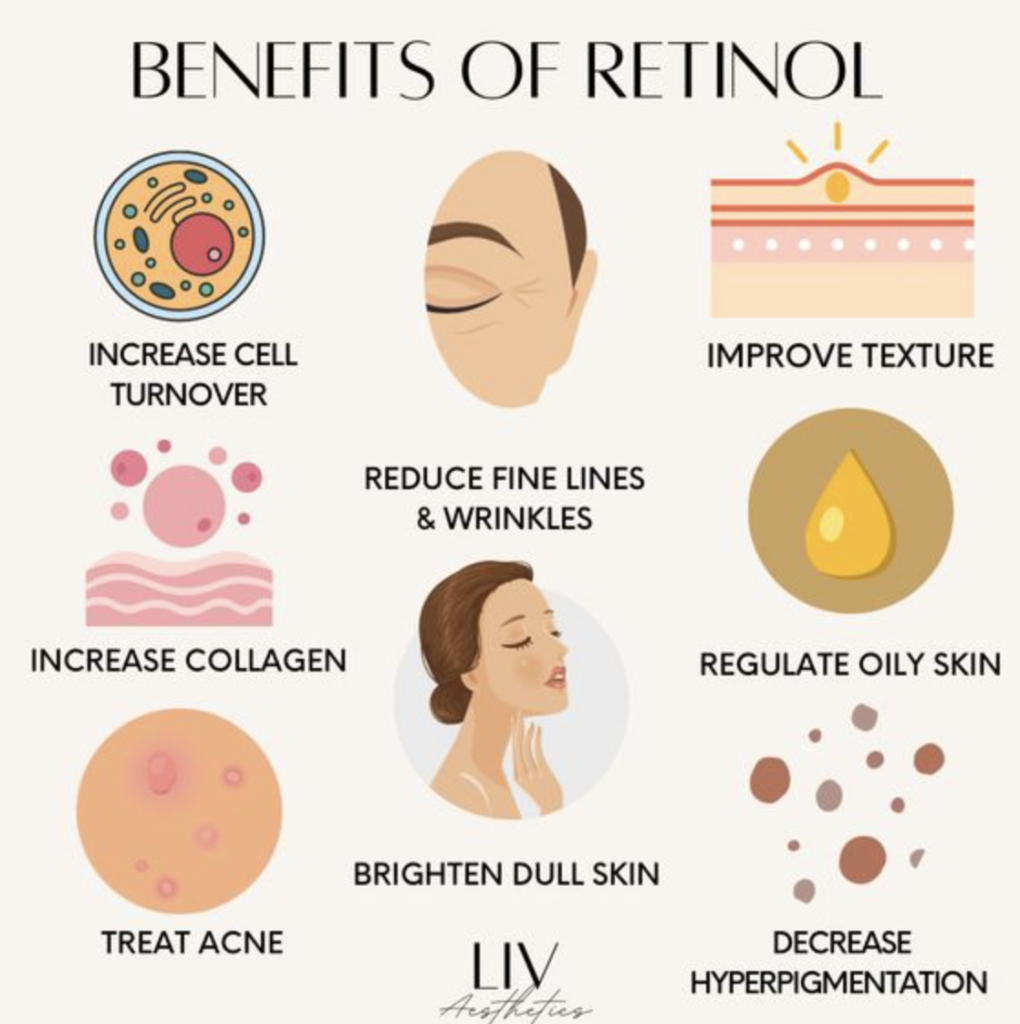
If you aren’t sure on the different between each type of retinoid (tretinoin cream, retin a, retinyl palmitate etc) then you really need to read this section first.
Most people get this wrong, and I see it allover social media – even from qualified aestheticians!
A retinoid is simply the category term for all products that convert into retinoic acid on the skin. It’s a bit like saying ‘haircare’ instead of shampoo, conditioner etc.
A retinoid is simply the category. This means that retinol is a type of retinoid, tretinoin is a type of retinoid and so on.
If someone says ‘I’m using a retinoid’, that means you actually don’t know which type of retinoid they’re using. It might be tretinoin and it might be over the counter retinol products.
Prescription retinoid vs. over the counter retinol products
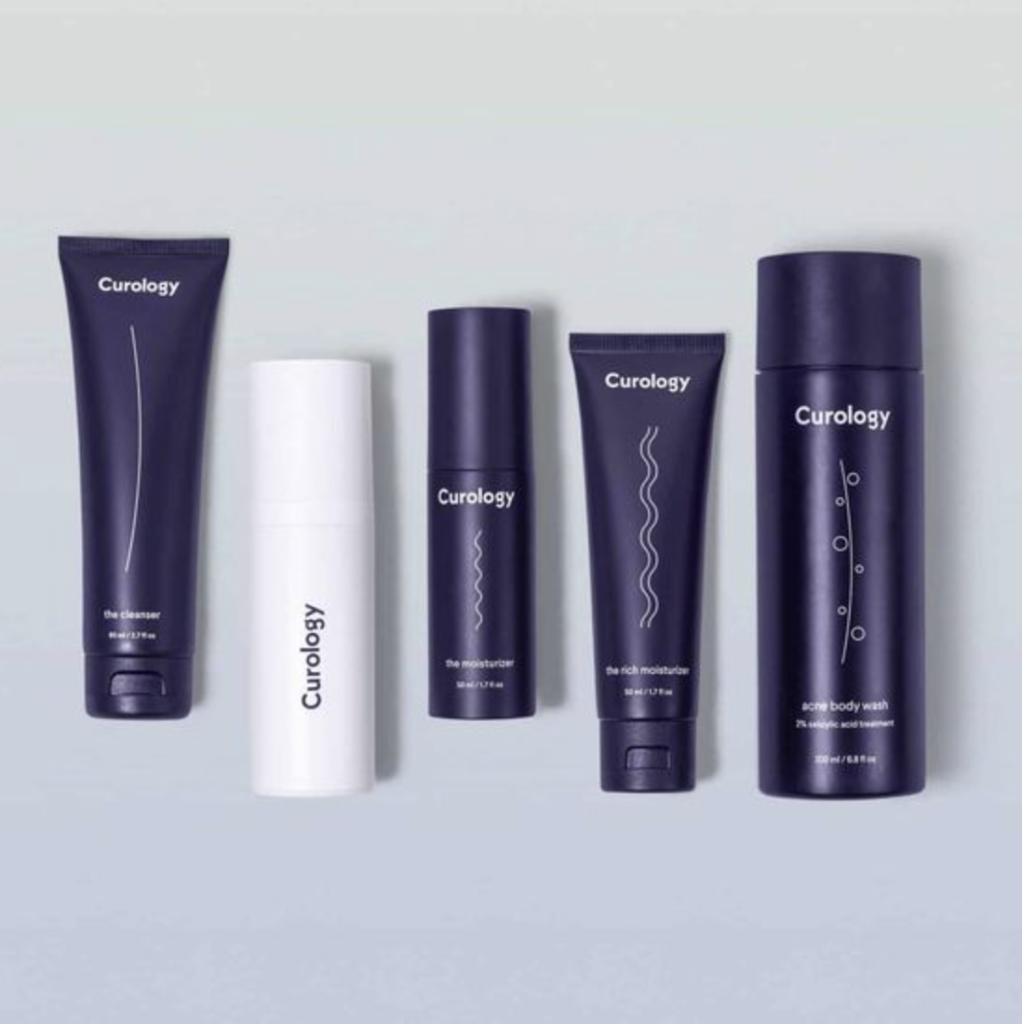
There are many kinds of retinoids, but it’s often easiest to split them into prescription retinoids and OTC retinoids.
‘Prescription’ just means that you can only purchase them with a prescription, either from your family doctor, dermatologist or an online provider like Curology, Dermatica, Skin & Me etc.
In some countries you can buy them without a prescription, like Mexico I believe. In the UK and US, the following are prescription-only:
- Tretinoin
- Tazarotene
- Trifarotene
Adapalene (also known as Differin) used to be prescription-only, but it has recently become available OTC in the US and in some places in the UK.
‘OTC’ simply means over-the-counter, so a product you can purchase without a prescription. Prescription retinoids are also technically classed as a prescription medication, another reason not just anybody can buy them.
How to pronounce tretinoin
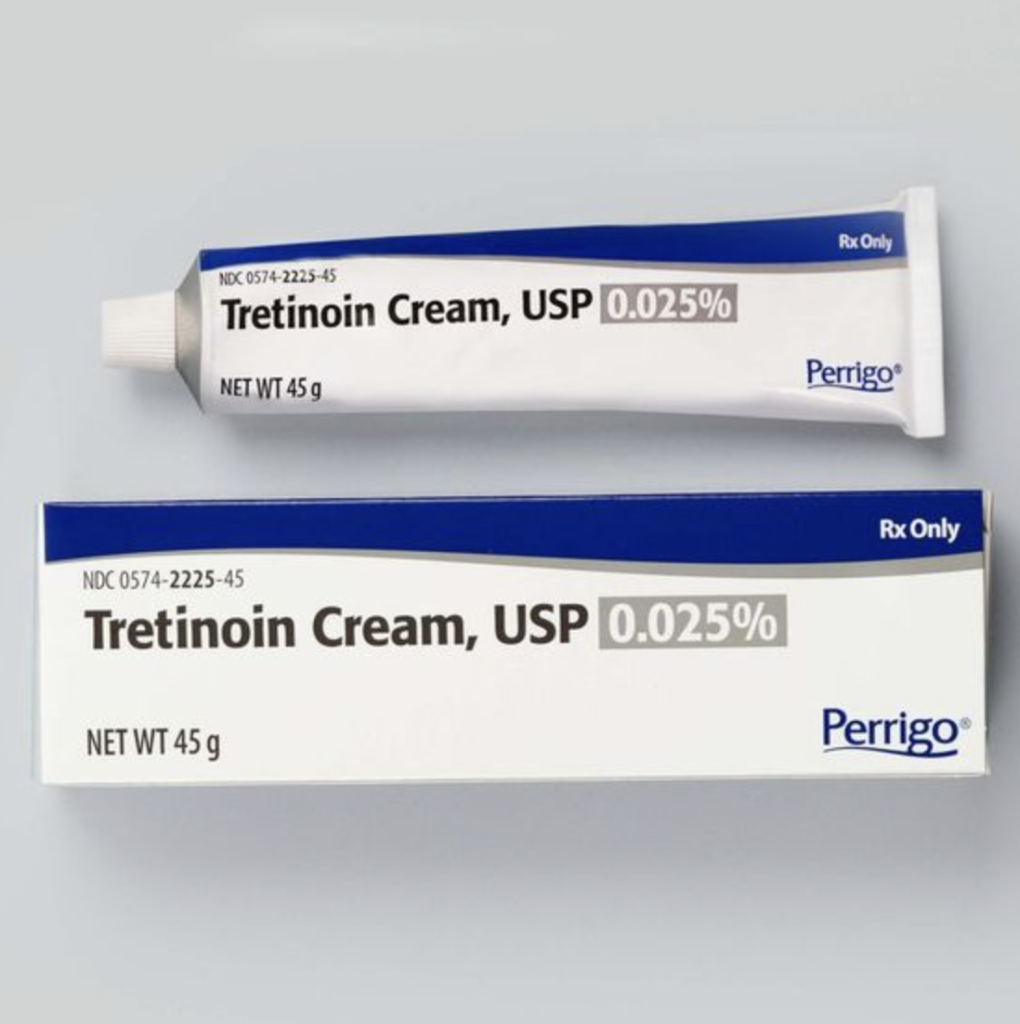
I’ll clear this one up quickly before we move on, since I see many people pronounce it incorrectly, and I also see lots of people have googled this recently.
Treh-tin-oh-in
I see a lot of people also describe it as a ‘tretinoid’ which is not a thing. Tretinoin is simply a type of retinoid, and I think that’s where the confusion has come from.
So how do retinoids actually work?
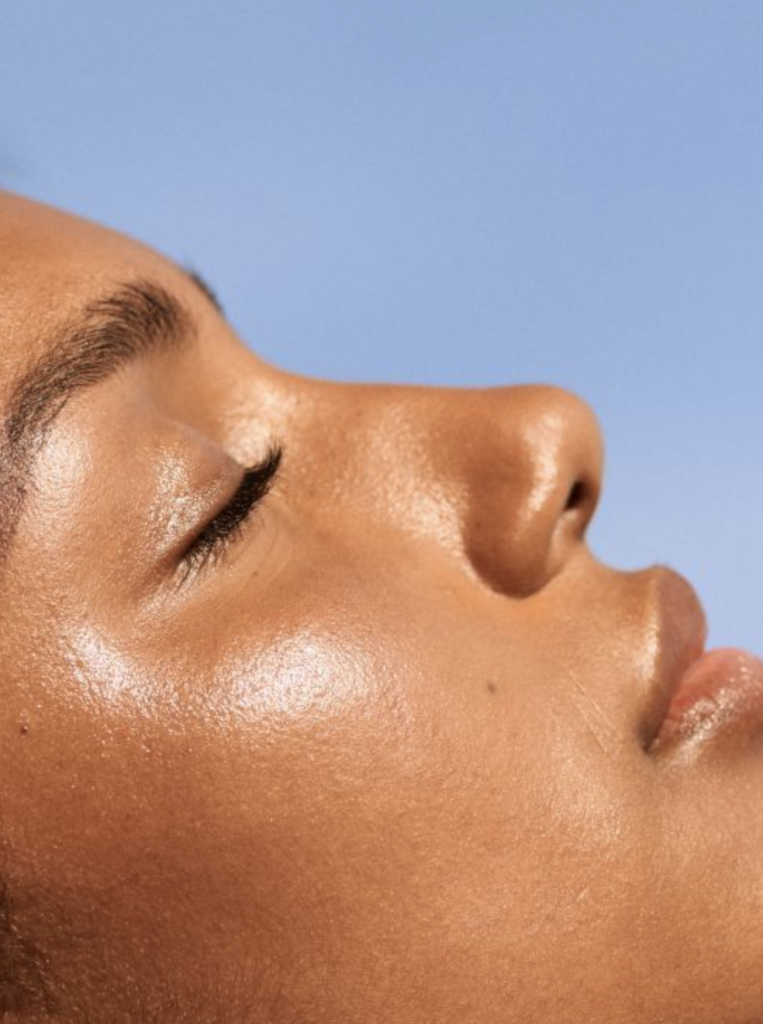
Understanding how retinoids work is key to understanding why they can’t be used in a skincare routine together.
Essentially, retinoids speed up skin cell turnover. Unlike BHA (salicylic acid) or glycolic acid, which break apart the glue that holds dead skin cells and blockages together, retinoids work entirely separately.
This is why retinoids are not classed as exfoliants, but improve overall skin texture like exfoliants do, because they are not exfoliating skin cells.
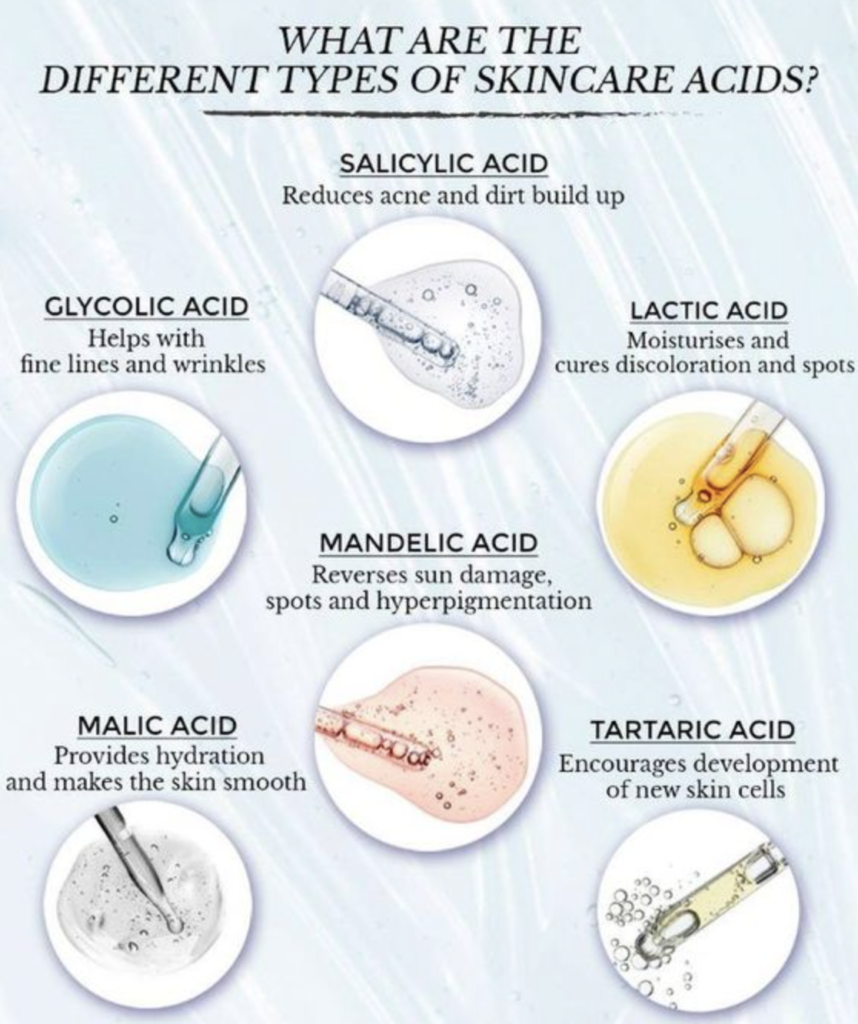
Instead, they are speeding up a lot of the skin’s natural processes. This speeding up can cause skin irritation, sensitive skin and dry skin.
Over time, though, your skin should adapt to using the retinoid and these side effects should mostly go away.
This period of time that your skin is adjusting is often referred to as the purge, the most notable side effect being increased acne breakouts.
This can feel really unfair, since retinoids are originally an acne treatment. The reason more acne occurs is because of the increased rate of cell turnover.
Why a retinoid can cause new acne breakouts
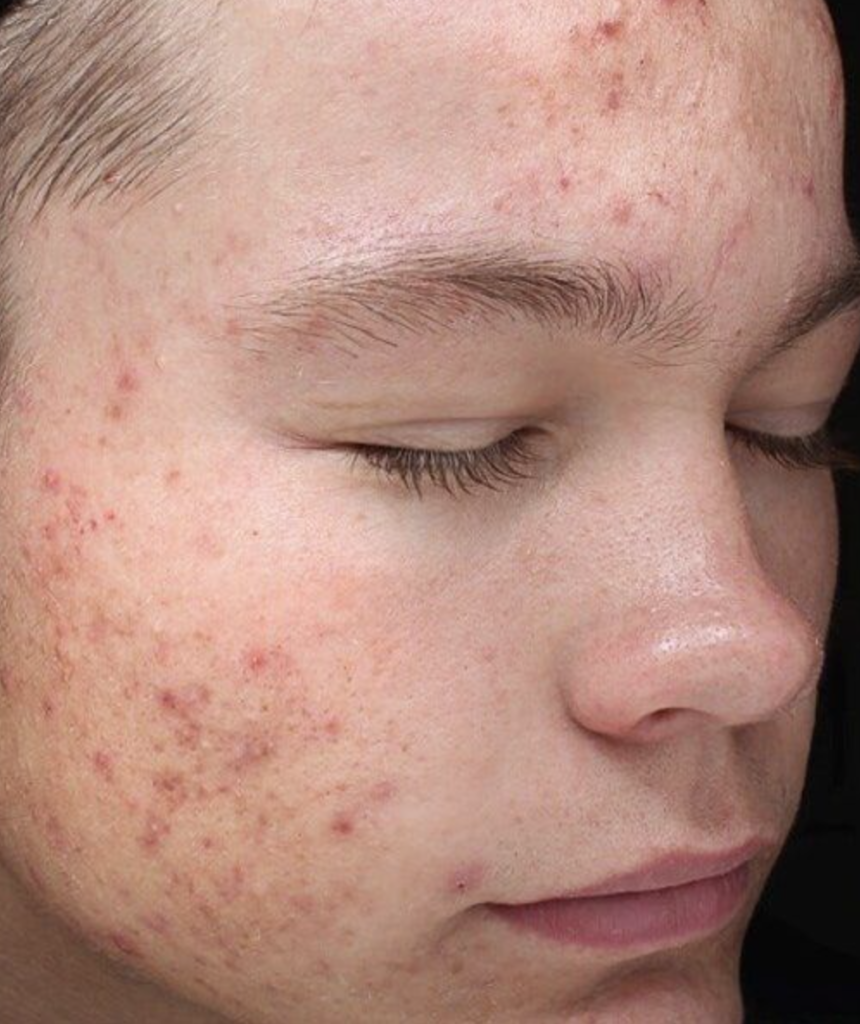
Imagine a twist-up lip balm – every time you twist the base, more and more lip balm is pushed to the surface. Now imagine your deeper layers of skin are the lip balm, waiting inside the tube to be pushed up.
The retinoid essentially ‘twists’ the base of the lip balm much faster, so deeper layers of your skin are rising to the surface much quicker.
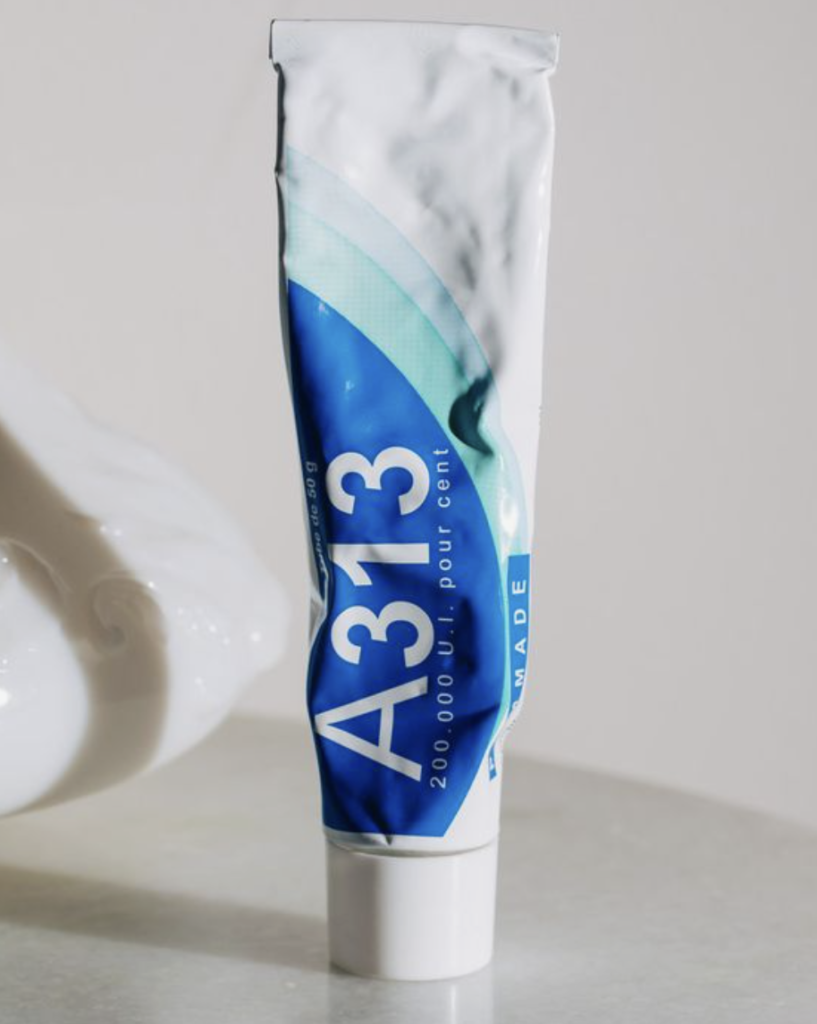
Deep within your skin, there are acne breakouts already forming. As the layers of skin are cycled through quickly, these little breakouts get pushed to the surface faster and faster.
It’s a bit like having months worth of pimples coming out – all at once! It’s really not a fun process, but purge breakouts do often go away much faster than regular pimples, so there’s one redeeming factor!
This whole process usually lasts a maximum of 3-4 months, but doesn’t always last that long.
Different strengths of retinoids can cause milder to more severe purges. For example, an OTC retinol may just cause a few pimples initially, whereas tretinoin generally takes longer to adjust to.
Benefits of retinol use
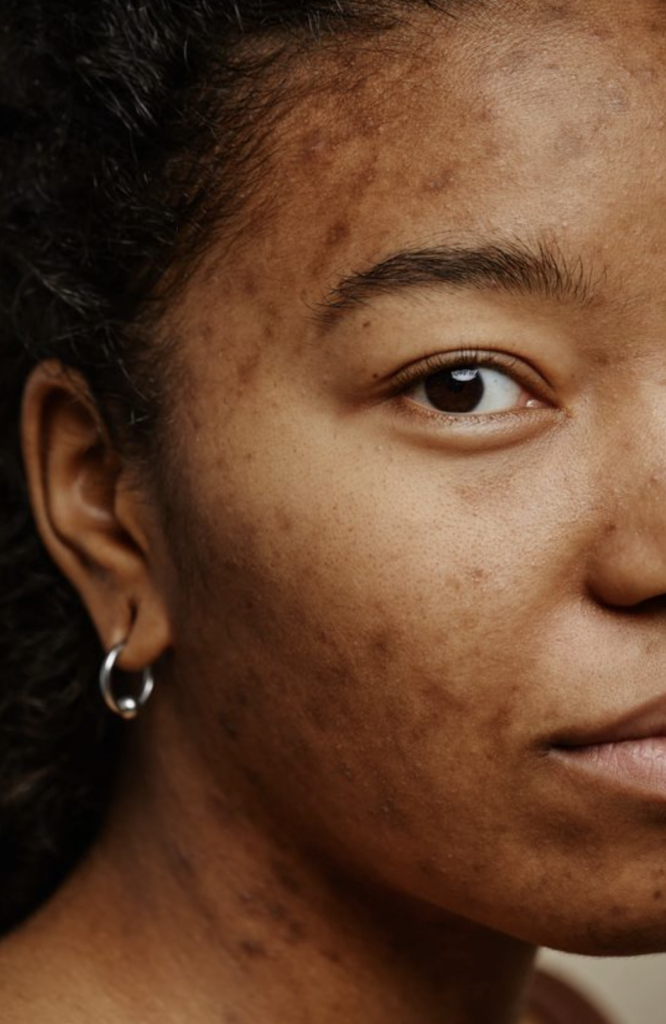
Using retinoids have tonnes of benefits. The one you’ve probably seen most commonly on social media is how a retinoid can transform a very acne-prone skin type into a picture of skin health.
This is not to say that acneic skin is not healthy, to be clear, but of course social media tries to convince us that clear skin = healthiest.
As an active ingredient it is very well studied, although the most studies are for prescription ingredients – Tretinoin being the most studied as it is the oldest.
From these studies we can see that is very effective for skin conditions like acne. It was originally designed as a drug for acne, but since it has been studied for so long, we have also been able to observe how well it can work for reducing signs of aging.
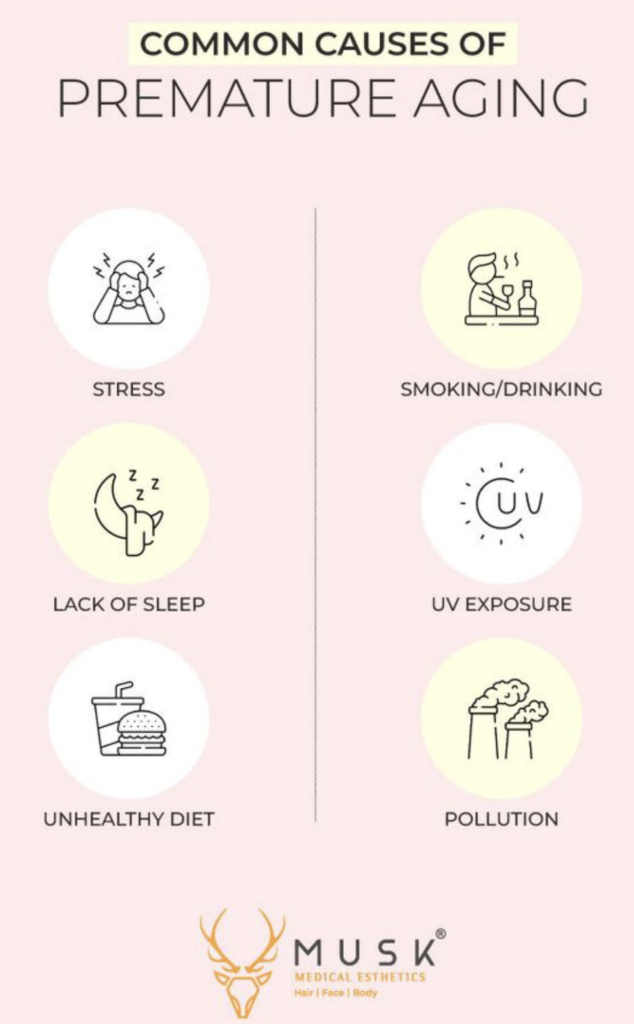
Tretinoin is one of the most proven topical treatments to reduce the appearance of fine lines. With consistent use of retinoids, increased collagen production can be observed which helps skin to appear more youthful-looking.
It’s early days but we’re also discovering that adapalene might work similarly well – since it is much newer, we have less studies.
As a bonus, retinoids are also very helpful for fading or removing dark spots from sun exposure, as well as evening out skin tone and fading acne marks.
Potential side effects of using retinol and tretinoin together
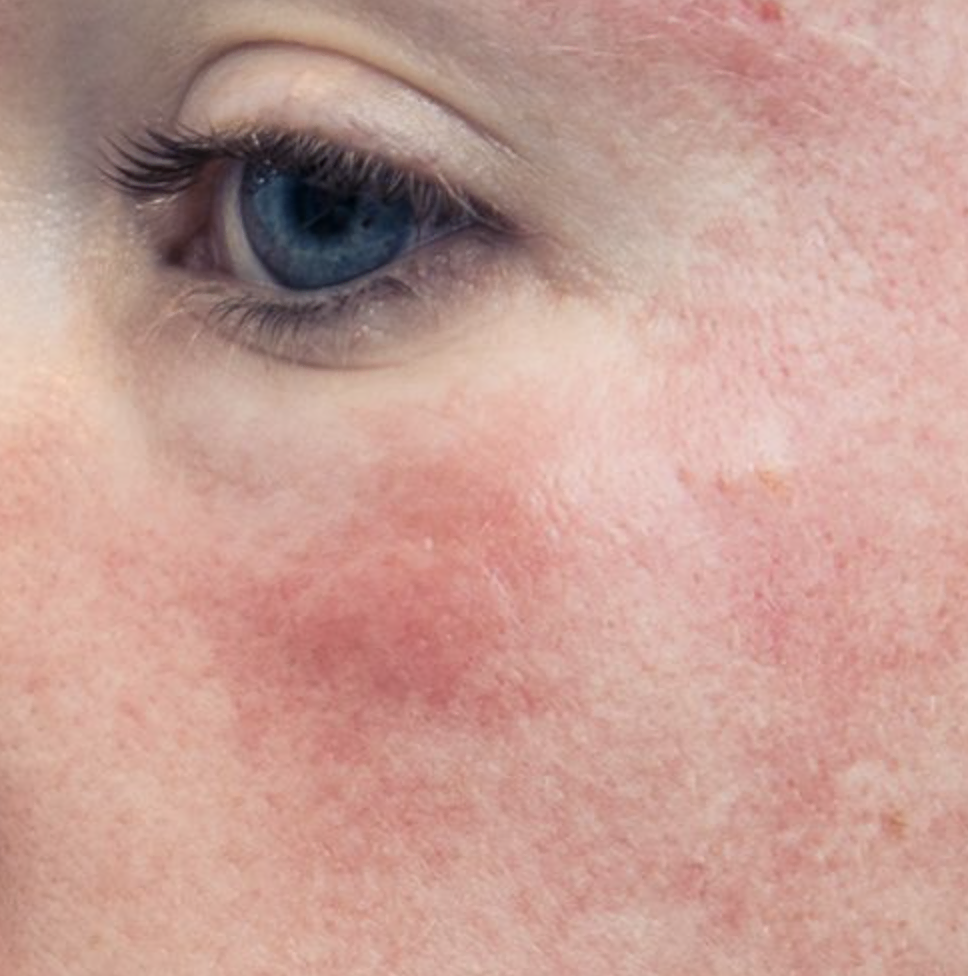
However, as with any skincare ingredient, you can have too much of a good thing.
Using lots and lots of your retinoid is not going to give you an extremely youthful appearance or be even more effective. In fact, using too much of your retinoid is likely to give you more negative side effects.
The most common side effect of a retinoid is increased skin dryness. When your skin is renewing itself at a rapid rate, you are likely to develop dry and sensitive areas.
Other common side effects include: red patches, flaky skin, acne purging and dry eyes.
You can see that, with so many possible side effects by using just one retinoid, it is not a good idea to use two at the same time – let alone in the same routine!
For better results, just stick to using one of your retinoids consistently.
Signs of a damaged skin barrier when using a retinoid

Another undesirable side effect that is mentioned a lot in social media is a damaged skin barrier.
Our skin has a protective lipid layer around it, and when you use too much of a certain active ingredient (or a combination of actives) you can weaken this protective barrier.
One major sign of a damaged skin barrier is when your products begin to sting as you apply them.
Particularly benign products such as moisturisers that you’ve used for years. If they now sting, it’s a sign your barrier is struggling.
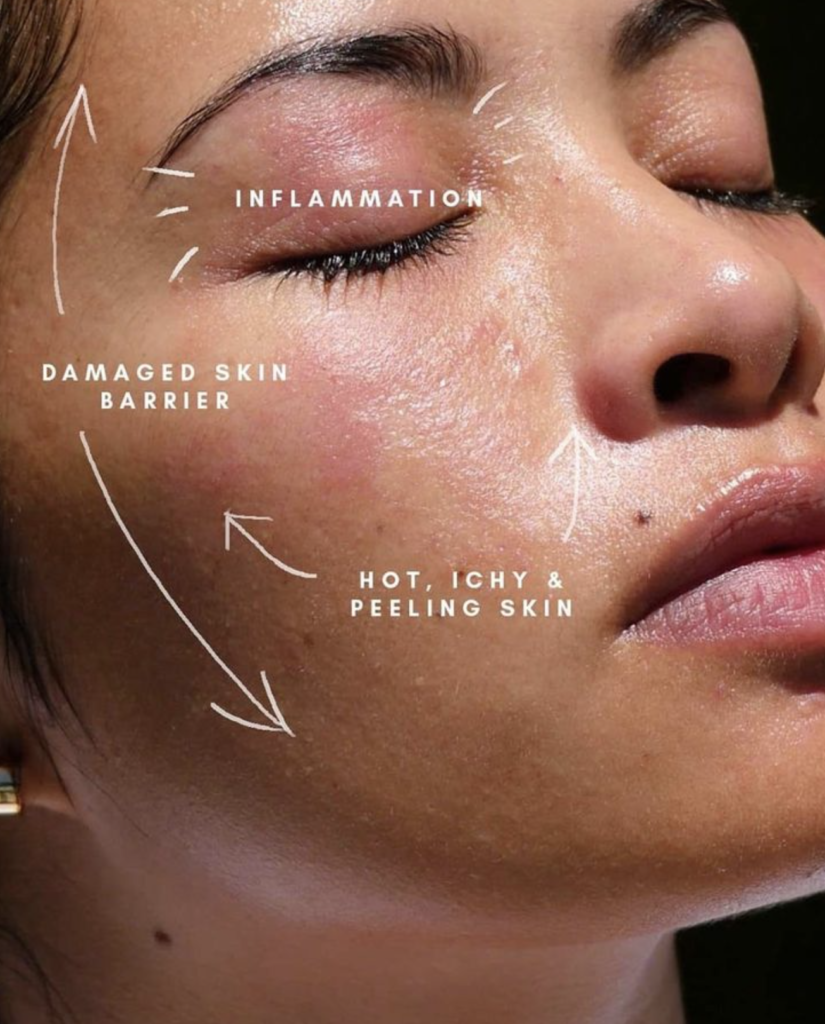
I’ve had this happen many times, but now that I’ve gotten a hang of things I’ve figured out the best protocol:
Firstly, consider taking a few days off of all actives. Not just your retinoid, but also vitamin C serums, lactic acid, alpha hydroxy acids, azelaic acid – basically anything that is exfoliating (hyaluronic acid is safe).
After a few days, start back up with just your retinoid and see how your skin feels.
It’s generally advised to stop using all other actives while you’re introducing a retinoid, so consider quitting them completely until you’ve adjusted to the retinoid well.
Lastly, consider introducing a barrier serum, toner or cream. These are my favourite barrier serums for clog prone skin.
By using a product which is specifically designed to enhance your barrier’s strength, you can reduce the likelihood that your barrier will get damaged easily.
How often to use a retinoid
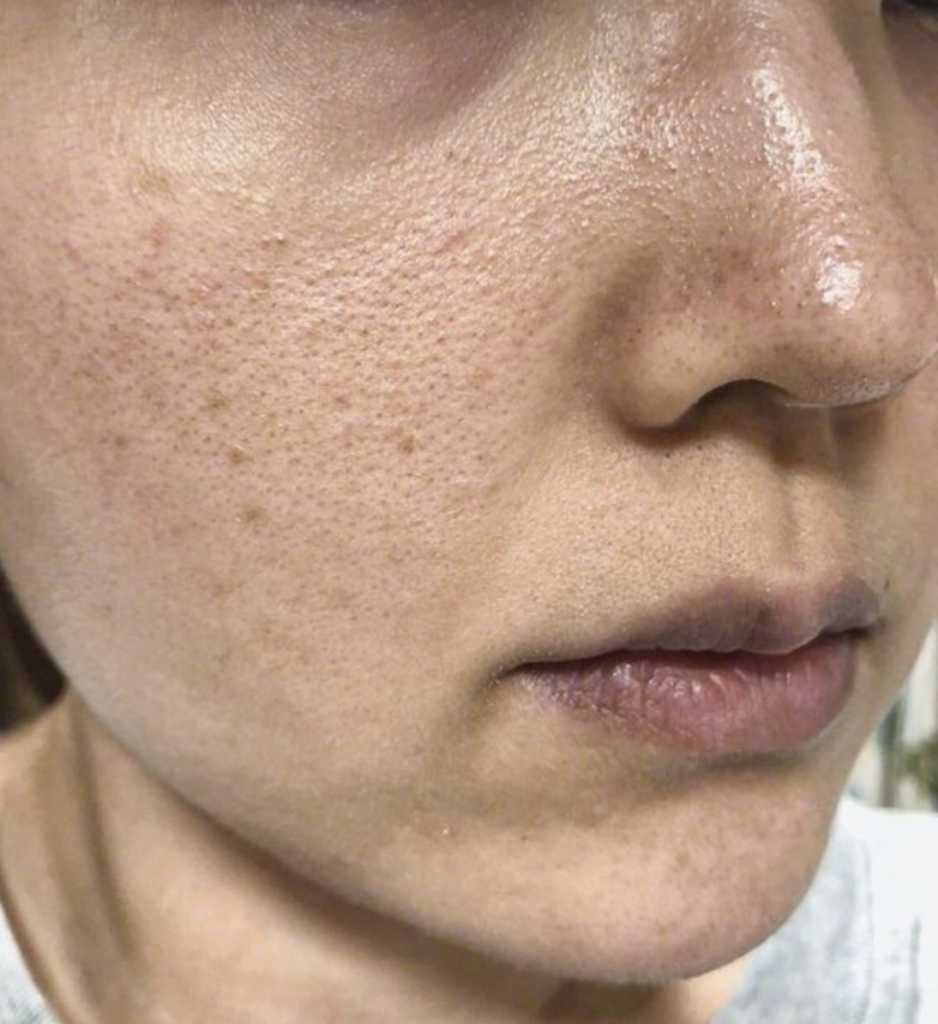
I do get asked a lot of questions about retinoids which is why I created my retinoid guide.
I do sell this, but most of the information is available in there is available on either TikTok, Instagram, YouTube or on this blog! The only difference is that the guide is all nicely bundled up with everything in one place.
Regardless I will share what I think is the best frequency to start using a retinoid at, no matter if its a lower concentration or higher concentration:
1-2x per week for the first 1-2 months
2-3x per week for the first 2-3 months
3-4x per week for the first 3-4 months
Lots of people think you have to be using a retinoid daily for best results, but every other day is also fine.
When you first start, you want to strike the right balance between consistency and irritation.
Sure, you might get through the acne purge faster if you use it every day, but you also will probably burn your face off! The 1-2x and 2-3x per week is designed to help you slowly get used to it without having too much of a terrible time.
I’ll acknowledge that your medical provider (and the box your retinoid comes in) might say to use it every single day from day one.
That is true, but it only takes a few online searches to see that that advice is a little outdated and can cause a really bad experience.
How to apply a retinoid correctly
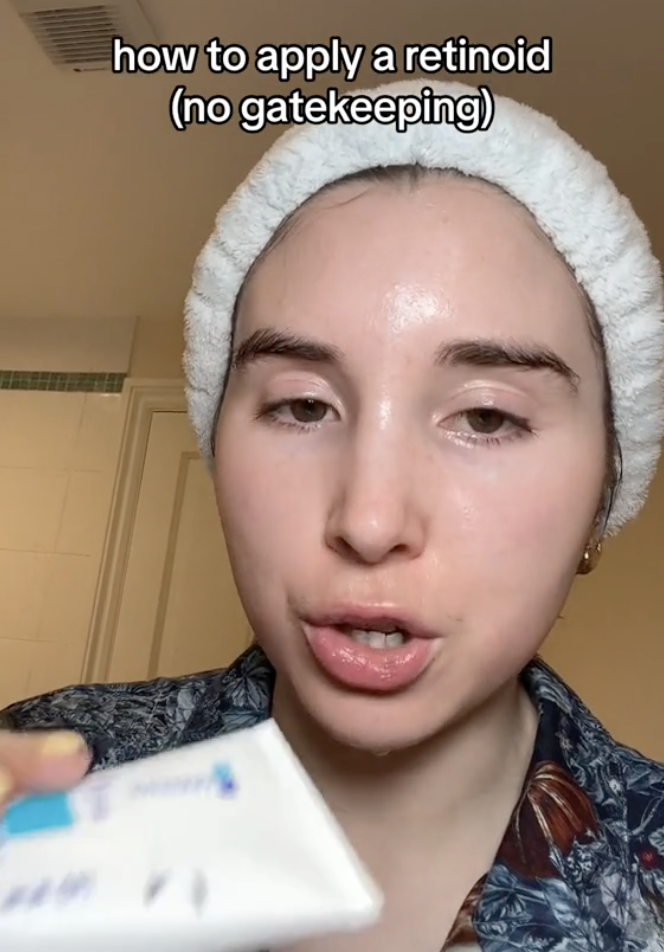
I’ve done quite a few videos on this, including a very in-depth TikTok tutorial, but I’ll also share it here:
You want be using a pea-sized amount, spread very thinly, allover the entire face. Retinoids are not a spot treatment, and you’ll miss out on most of the benefits and significant changes if you just dab it on your spots.
The best time to apply a retinoid is at night time. Some retinoids aren’t very photostable, such as tretinoin. However adapalene is actually very photo stable, which means it can be applied in the day time.
Despite this, I still think the better option is night time, since your skin is doing all of its repair in the evening and your skin care may not sit nicely on top of the retinoid.
As for the rest of your skin care regimen, I would suggest to apply the retinoid first thing after cleansing.
Make sure your skin is dry by using a clean towel to pat it dry, it needs to be bone dry – not damp.
Wait 10-20 minutes after you apply it, then carry on with your other skincare products. Of course do not use any clashing actives such as: benzoyl peroxide, salicylic acid or AHAs.
What about the sandwich method?
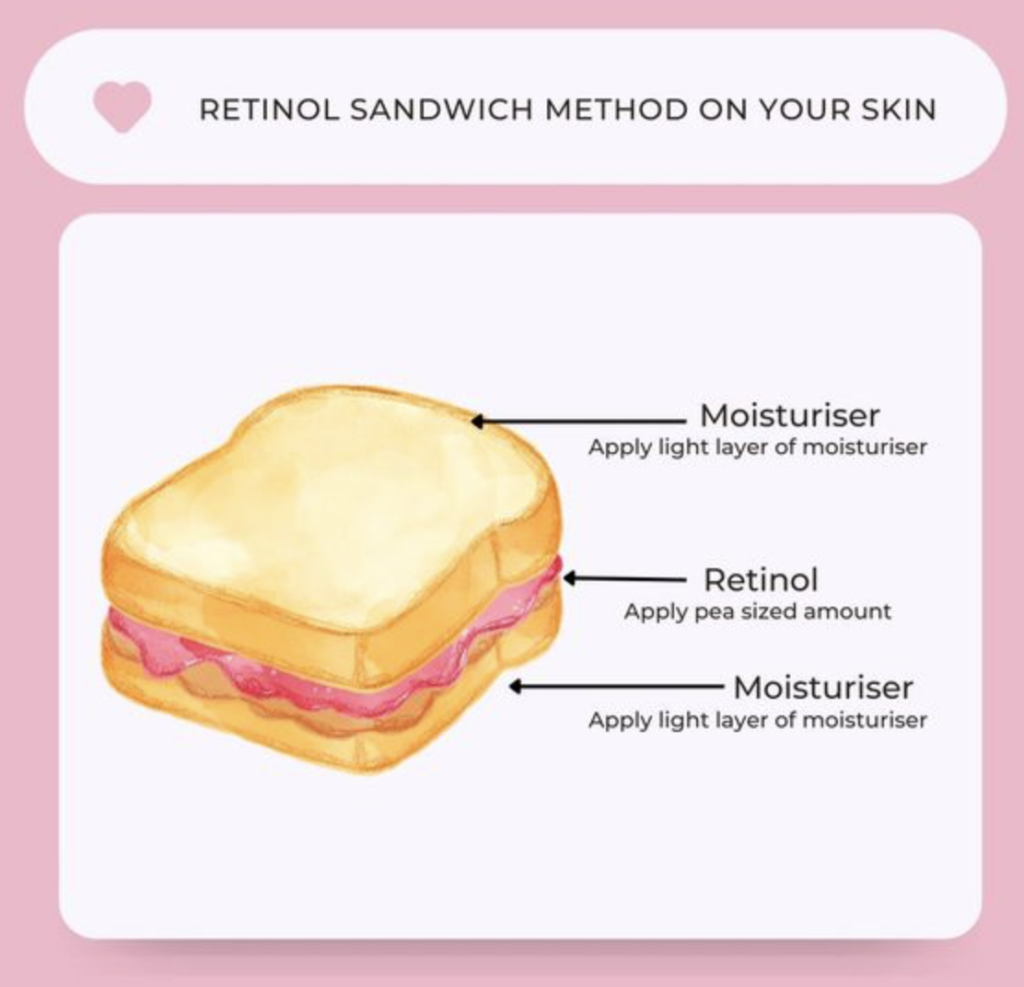
There are lots of videos online featuring a board-certified dermatologist, giving advice to try the sandwich method or the buffering method.
The sandwich method means creating a ‘retinoid sandwich’. Essentially applying a moisturiser, waiting for it to dry, then applying your retinoid and then another layer of moisturiser.
Or there is the buffering method – simply applying a moisturiser and then the retinoid. The moisturiser acts as a buffer for the retinoid.
I have tried these and they work wonderfully for some, but I have never gotten along too well with them.
At the end of the day we all have individual needs, so if you feel most comfortable trying that – go for it!
Likewise, if you have done the buffer or sandwich method for many months and aren’t seeing great results, I’d recommend removing the buffer of moisturiser and seeing if that improves things.
So, can you use retinol and tretinoin together?
Ultimately no, using them in the same routine does not make sense and will probably irritate your skin a lot.
The only exception, in my opinion, is if you’re using a strong then weak retinoid on alternating days.
I can see how that might work for some people, but I think it just over complicates things so I wouldn’t advise it.
This was Can I Use Retinol and Tretinoin Together? You may also like:
- Retinol vs Retinoid: the Best Retinoids for Clogged Pores
- Can You Use Differin Gel with Salicylic Acid for Acne?
- Which is the Best Retinol from the Ordinary?